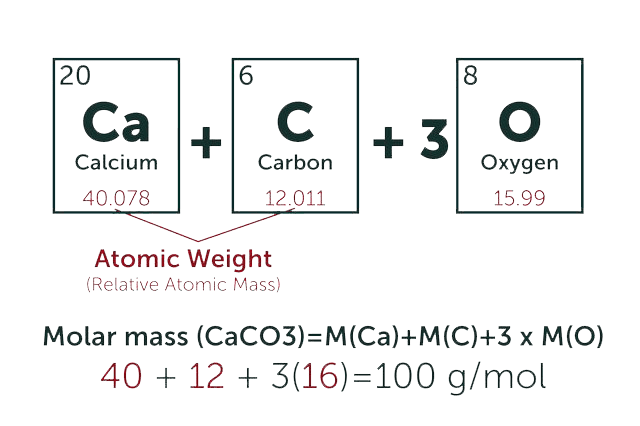Hetacillin
* Please be kindly noted products are not for therapeutic use. We do not sell to patients.

| Category | Antibiotics |
| Catalog number | BBF-01719 |
| CAS | 3511-16-8 |
| Molecular Weight | 389.47 |
| Molecular Formula | C19H23N3O4S |
| Purity | >98% |
Online Inquiry
Description
Hetacillin is a prodrug type semi-synthetic penicillin prepared by the reaction of ampicillin and acetone.
Specification
| Related CAS | 5321-32-4 (potassium) |
| Synonyms | Hetacillinum; Phenazacillin; Hetacilina |
| Shelf Life | As supplied, 2 years from the QC date provided on the Certificate of Analysis, when stored properly |
| Storage | -20 °C |
| IUPAC Name | (2S,5R,6R)-6-[(4R)-2,2-dimethyl-5-oxo-4-phenylimidazolidin-1-yl]-3,3-dimethyl-7-oxo-4-thia-1-azabicyclo[3.2.0]heptane-2-carboxylic acid |
| Canonical SMILES | CC1(C(N2C(S1)C(C2=O)N3C(=O)C(NC3(C)C)C4=CC=CC=C4)C(=O)O)C |
| InChI | InChI=1S/C19H23N3O4S/c1-18(2)13(17(25)26)21-15(24)12(16(21)27-18)22-14(23)11(20-19(22,3)4)10-8-6-5-7-9-10/h5-9,11-13,16,20H,1-4H3,(H,25,26)/t11-,12-,13+,16-/m1/s1 |
| InChI Key | DXVUYOAEDJXBPY-NFFDBFGFSA-N |
Properties
| Appearance | Flake Crystal |
| Application | Hetacillin is a β-lactam antibiotic. |
| Boiling Point | 648.4°C at 760 mmHg |
| Melting Point | 182.8-183.9°C(dec.) |
| Density | 1.43 g/cm3 |
| Solubility | Soluble in DMSO, DMF, Pyridine |
Reference Reading
1.HPLC determination of K-hetacillin and Na-dicloxacillin in oily suspension.
Kitsos M, Massolini G, Gandini C, Caccialanza G. Boll Chim Farm. 1989 Jul-Aug;128(7-8):229-31.
A simple and rapid high performance liquid chromatographic method was developed for separation and identification of K-hetacillin and Na-dicloxacillin in oily suspensions for veterinary practice. The method is precise, accurate and applicable to the analysis of commercial dosage form.
2.Determination of beta-lactam antibiotics in water by fluorescence quenching of mercurochrome, and application for simple investigation of potency.
Mori I, Fujita Y, Ikuta K, Kitano S, Kawabe H, Nakahashi Y, Kato K, Inamori Y. Chem Pharm Bull (Tokyo). 1989 Jul;37(7):1827-30.
The fluorescence quenching reaction between fluorescein mercury or halogeno-fluorescein mercury compounds (fl. Hg, 2,7- or 2,4-dichloro-fl.Hg, 3',4',5',6'-tetrachloro-fl.Hg, mercurochrome) and beta-lactam antibiotics (ampicillin (AB-PC) and cephalexin (CEX] was investigated, and mercurochrome was selected for the detection of beta-lactam antibiotics; the detection limit was about 0.8 micrograms/ml. A fluorimetric assay of beta-lactam antibiotics was established by measuring the fluorescence of mercurochrome and mercurochrome-beta-lactam antibiotics solutions in weakly basic media to determine the degree of fluorescence quenching. The maximum emission wavelength of mercurochrome solution was at 544 nm with excitation at 470 nm. The calibration graphs were linear over the ranges of about 0-6 micrograms/ml beta-lactam antibiotics penicillins (AB-PC, penicillin G, sulbenicillin, amoxicillin, cyclacillin, oxacillin, hetacillin and piperacillin) and cepham antibiotics (CEX, cefazolin, cephaloglycin, cephaloridine and cefpyramide), and the relative standard deviation was 2.
3.The effect of intramammary antibiotic therapy at calving on udder health traits.
Fox LK1, Hancock DD, Weems CW, Toma W, Chang E. J Dairy Sci. 1987 Aug;70(8):1696-700.
The effect of intramammary antibiotic therapy at calving on mastitis infection prevalence, linear score milk somatic cell count, and milk NAGase activity, 30 d postpartum, and on milk production, 90 to 120 d postpartum, was tested. Cows (n = 175) were split into treatment and control groups at drying off. All cows received commercial dry cow therapy. At calving, treated cows received commercial lactating cow therapy in all quarters after the first two milkings; control cows were not treated. Composite milk samples were aseptically collected from all cows at drying off, calving, and 30 d postpartum. Udder health traits: linear score milk SCC, NAGase activity, and bacterial content in milk, were determined on all samples. The first three DHI milk weights were recorded for all cows. Treatment and control cows had similar prevalences of intramammary infections during the dry and 30-d postpartum periods. Least squares means of linear score milk SCC and NAGase activities were similar at drying off and calving.
4.Short communication: Pharmacokinetics of intramammary hetacillin in dairy cattle milked 3 times per day.
Lindquist DA1, Baynes RE1, Smith GW2. J Dairy Sci. 2015 Mar;98(3):1856-61. doi: 10.3168/jds.2014-8715. Epub 2014 Dec 26.
Mastitis remains a critical disease in the dairy industry and the use of intramammary antibiotics plays a critical role in mastitis treatment. Hetacillin is currently approved as an intramammary antibiotic that is used to treat mastitis in dairy cows. It is approved for once a day administration and can be used for a total of 3 d. An increasing number of dairy farms are milking 3 times per day (instead of the traditional 2 times per day) and very little pharmacokinetic data exists on the use of intramammary drugs in a 3×system. The primary purpose of this study was to determine if once a day intramammary infusion of hetacillin is sufficient to maintain therapeutic drug concentrations in cattle milked 3 times per day. Eight Holstein cattle milked 3 times per day were used in this study. After collecting a baseline milk sample, each cow received intramammary infusions of hetacillin in the left front and right rear quarters once a day for 3 d.
Recommended Products
| BBF-02575 | Pneumocandin A0 | Inquiry |
| BBF-04727 | Strigolactone GR24 | Inquiry |
| BBF-03794 | Geneticin sulfate | Inquiry |
| BBF-04609 | 1,1-Dimethylbiguanide hydrochloride | Inquiry |
| BBF-05877 | Coenzyme Q10 | Inquiry |
| BBF-00968 | Homoalanosine | Inquiry |
Bio Calculators
* Our calculator is based on the following equation:
Concentration (start) x Volume (start) = Concentration (final) x Volume (final)
It is commonly abbreviated as: C1V1 = C2V2
* Total Molecular Weight:
g/mol
Tip: Chemical formula is case sensitive. C22H30N4O √ c22h30n40 ╳


